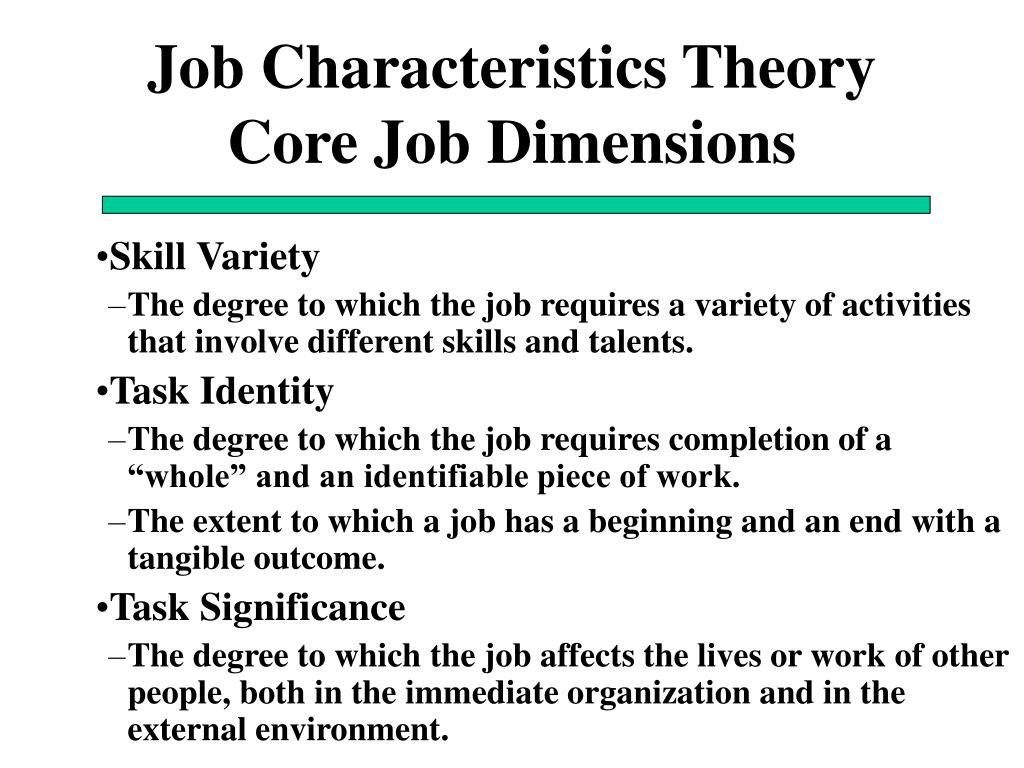

The JCM's five variables create a framework that best influences the psychological state of employees regarding their work with the goal of positively influencing responsibility, meaningfulness, motivation, performance and satisfaction. Related: What Are Employee Performance Metrics? (With Examples) 5 core job characteristics Human resource professionals and management can use the JCM to enrich the workplaces by using them to tailor their job descriptions. The model also identifies specific individual characteristics that act as moderators in the relationship between the features of jobs and performance variables. The JCM takes note of five critical job characteristics presumed to benefit individuals' motivation and productivity at work. If a job is stimulating, it can result in a morale boost, improved work quality and increased productivity. For example, a monotonous job can lower motivation, while a versatile and challenging job may increase motivation.

This means that a job itself helps motivate you.

The theory posits that enriching an employee's tasks produces a proportional increase in motivation. The job characteristics model (JCM) is a theory that recommends an ideal way to increase employees' motivation. In this article, we define what the job characteristics model is, explain its core characteristics and go over the benefits of using this model. Learning more about how this model works and how companies implement it can help you understand the purpose of your tasks and how they can help your personal and career growth. Many companies employ the job characteristic model to develop meaningful tasks for their employees. There are many ways a company can motivate and train its employees to reduce employee turnover and increase productivity.


 0 kommentar(er)
0 kommentar(er)
